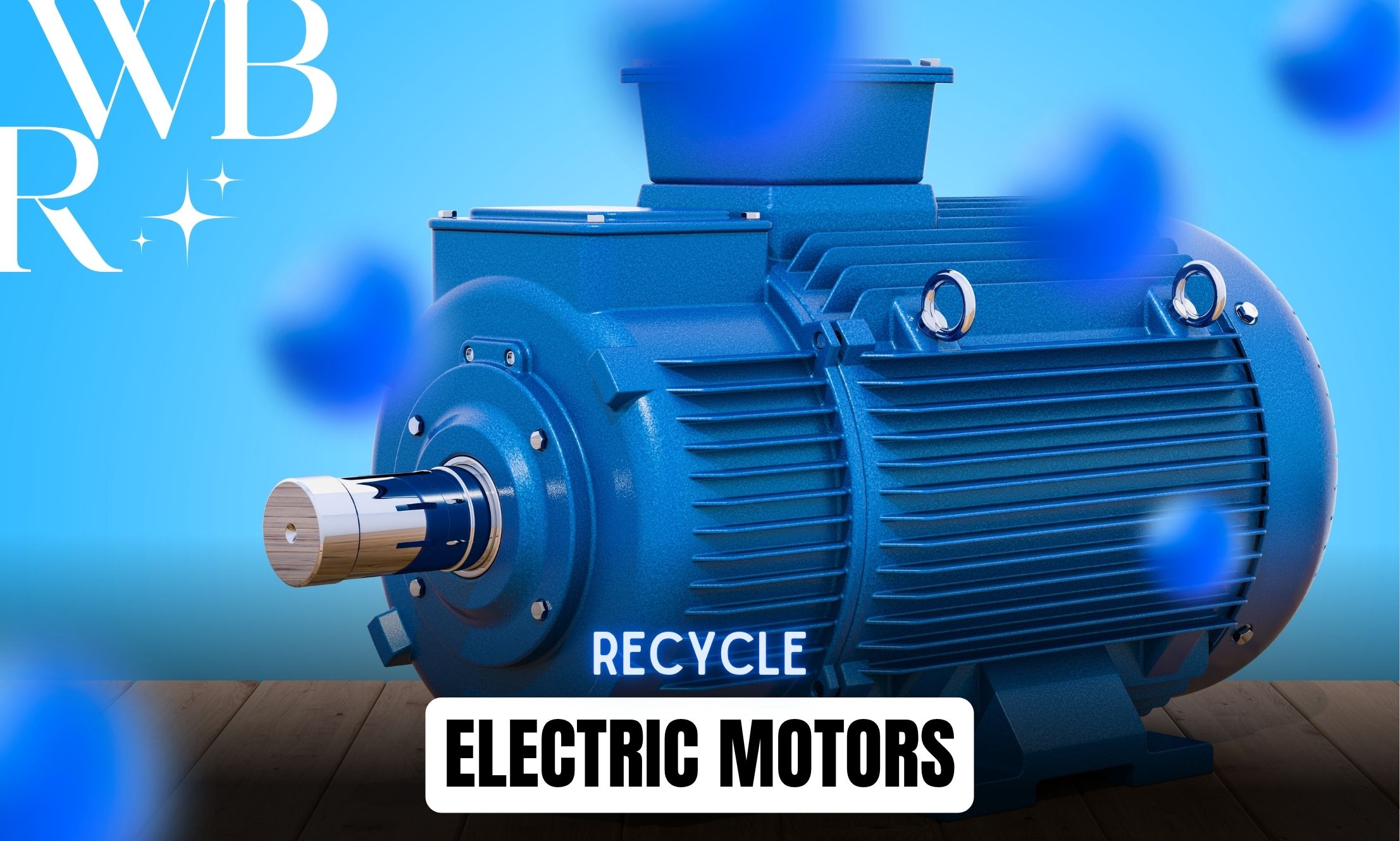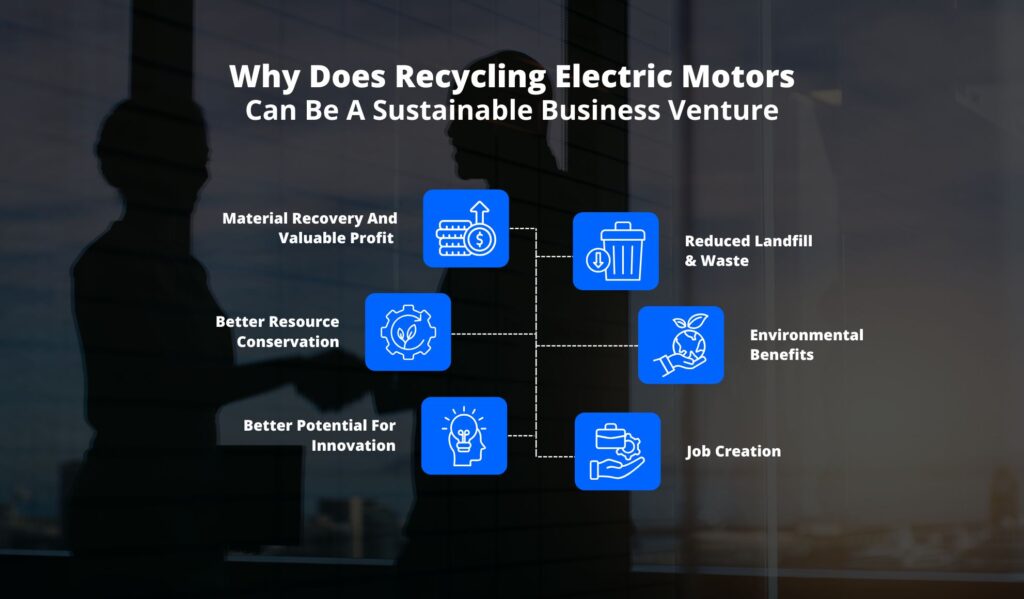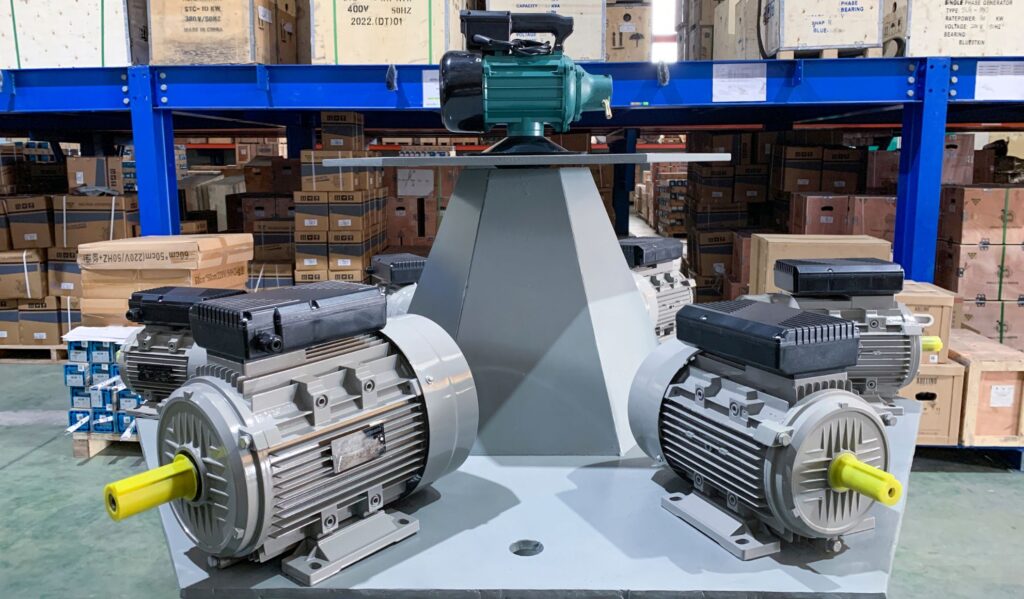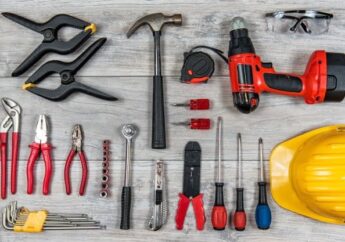Your Ultimate Guide to Recycling Electric Motors: Transforming Waste into Wealth
by Arnab Dey Automotive Published on: 25 February 2022 Last Updated on: 11 June 2025

You can spot electric motors anywhere, from vacuums to computers, ceiling fans, and air conditioners. Almost everything that uses electricity and has movable parts requires electric motors on the inside.
Often, they are dumped and recycled as scrap metals because they are relatively heavy and have a huge amount of copper (Cu) wire.
Planning to recycle electric motors is just the first step. As a responsible recycler, you also want to make sure that your materials are recycled properly. There are different methods, programs, and options in recycling metals, depending on your locality.
A guide on how to properly recycle metals and parts, specifically electric motors, is not only a big help to home and establishment owners but also an unburden to scrap collectors.
What are Electric Motors?
The conversion of electrical energy into mechanical force is at the heart of every electric motor. This process starts with an electromagnetic field that interacts with wire windings, generating torque in response to how much current flows through them (Faraday’s law) and then applied to the motor’s shaft.
Electric motors are the reason we have so many of today’s technologies. It can be powered by either direct current, like batteries or rectifiers, or alternating current sources like inverters and generators.
It requires no fuel source but instead produces electricity using an electric motor to work against its rotation speed which turns belts/rollers within devices powering everything from your home appliances through large-scale industrial processes.
The electric motor has played a crucial role in modern technology, from cars and trains to household appliances.
The different types of motors are broken down into three categories: AC motors, DC motors, and special purpose motors.
Induction is a fundamental principle of electricity, and it’s been used to power everything from watches in your pocket up through gas turbines that create energy for homes.
When an alternating current interacts with changing magnetic fields, those created by motors running at different speeds than what is set out.
A force called “induction” results has become essential, especially today when engineers must design more efficient systems.
Why Does Recycling Electric Motors Can Be A Sustainable Business Venture?

Recycling electric motors means you can easily ensure a great future sustainability by conserving both natural resources and further reducing waste. As for business venture, I think it can be a profitable business as well.
Through this business venture you will be able to recover valuable materials such as copper, aluminium, reduce all the possible waste and landfill space. Moreover, you will be able to contribute for environmental sustainbility.
Here’s how you can gain the maximum benefits:
Material Recovery And Valuable Profit
The electric motors are made out of valuable materials such as copper and aluminium. You can easily recycle them and further sell them to earn the revenue.
Reduced Landfill And Waste
The recycling process can help to preven scrap motors which may end up in landfills. This can help you to reduce waste as well as pollution which is associated with the disposal process.
Better Resource Conservation
Recycling can help you to conserve energy and other natural reosurced. You just have to reuse the materials instead of extracting any new components.
Environmental Benefits
A better recycling process can always promote more sustainable and environmentally approaches for both manufacturing and consumption.
Better Potential For Innovation
As a new recycling venture, you can explore various innovative technologies and further process it improve efficiency.
Job Creation
The recycling industry can create new jobs for the workers who are involved in collecting, processing, further sorting all kinds of recycled materials.
Types of Electric Motors You Can Recycle
Before you actually proceed with your electoirc motor recycling venture, it is necessary to understand the types of electronic motors that are available! Read on…
DC Motors – DC motors are a type of electric machine that converts electrical energy into mechanical rotation. They take in charged Direct Current from the power supply and turn it onto its opposite state with an applied magnetic field, which produces rotary motion and physical forces acting upon objects inside them due to conservation laws.
DC motors are capable of generating both torque and speed. The design is dependent on how you apply an electrical current to it and what kind of motor they have inside their core, which can be changed depending upon your desired result.
Synchronous Motors – The synchronous electric motor is a type of machine that uses an AC to cause the rotation of the shaft. At a steady-state, these machines will always remain perfectly phased with one another and never break out into slip because there are no rotating components involved in their construction.
- 3 Phase Induction Motors (a type of induction motor) – The 3-phase induction motor is a device that converts electrical power into mechanical or vice versa.
It means it takes the fluctuations of voltage and turns them into regular old-fashioned currents to move metal objects around efficiently.
The three phases of an induction motor are the stator, which carries a permanent magnetized rotating field that generates electricity when it is turned like a brushless DC motor. Rotor carrying short-circuited windings called “rotor wounds.”
The currents generated in each phase go through electromagnetic fields to produce forces on surrounding particles causing them to move around until finally being compressed enough for heat generation reaction at baseband frequencies.
- Single Phase Induction Motors (a type of induction motor) – The single-phase power system is used for domestic purposes, commercial buildings, and industrial uses. It’s less expensive than three-phase electricity because it only requires one wire which makes the installation process easier.
The single-phase motor is a simple and cheap device that can be used in many different applications. It makes it an excellent choice for vacuum cleaners, fans or blowers because of its high durability against wear & tear and low cost to operate with all these benefits.
- Other special, hyper-specific motors
How To Properly Recycle Electric Motors

Electric Motors are the most used type of motors in modern-day technologies. They can be found on virtually any item that requires electricity and has moving parts, including vacuums or computers; they also function as a part of air conditioners and ceiling fans.
These powerful little devices contain an electric motor that converts direct current and alternating current. The copper wires inside these scrap metal recycling destinations make up almost its weight.
- When you get your hands on an electric motor, be careful not to damage the brittle plastic or metal parts. Use a screwdriver and hammer if necessary for disassembly but ensure that all of these delicate pieces are protected when moving them around because they could scratch surfaces easily during transport. However, you have to ensure that you have protected the delicate pieces when moving them around because they could scratch surfaces easily during transport.
- The electric motor may have an insulated copper wire attached to it. You can use wire cutters, snippers, or pliers and remove them from the appliance’s insulation as needed for recycling purposes. Make sure not too much comes off so that there are enough threads left on each core strand.
- Once you’ve removed the electric motor from your item, it is time to add them all up in one big pile.
- The wire inside of an electric motor can be either copper or aluminum. If you want to know which one your particular type is, just take a look at the color.
- Some people think it is complicated to work on. However, if you have 50 or more of them, it may be worth taking some apart. The copper wire inside makes this task difficult, so make sure it’s something worth doing before you start.
- Your electric motors may have to be pried open with a hammer and screwdriver to get the copper wire coil out of it. Once you’ve done that, make sure other metals like steel or aluminum don’t mix up with plastic materials, as this can damage them too.
Benefits In Recycling Electric Motors
If you live in Florida and have an electric motor that needs to be recycled, head on down! You won’t regret it.
Electric motors are very tempting for people who want the copper wire inside but may not know what they are getting themselves into when taking apart these devices- especially if there is no experience with this sort of thing beforehand (and time becomes valuable).
The best option would be going through one of the recycling centers where someone pays cash right away while providing them with all the necessary tools.
The most likely place to find an electric motor is in your home. They can be found used for anything from microwaves, hand tools, and other appliances like clothes dryers or refrigerators, but are also present within garage-based equipment such as lawnmowers/snow blowers.
When selling a motor, it is essential to disconnect any mounting base or anything attached so that the buyer can get as much money for their recycled materials.
Sellers should focus on just providing information about how many steel teeth there are in each magnet and keeping this ratio intact when they sell them off.
Instead of worrying too much about other details like color schemes and style preferences which may not matter anymore since most consumers want clean logos without unnecessary decoration.
The Recyclable Materials You Can Find in Your Electric Motors
The recycling of various metals is an important aspect that must not be overlooked. Not only do they have practical applications, but also it is vital for environmentally conscious people like you.
One such metal with many potential uses could very well be cobalt – which has recently been found in lithium-ion batteries (specifically the cathode). This type provides power within almost every device we use today.
Especially those rechargeable ones with a battery life span shorter than three months or so. The great thing about this crucial commodity? It can go on indefinitely without losing any quality whatsoever because all parts contain recyclability codes engraved onto them.
The metals found in electronics are not only recyclable but are also quite conductive and lightweight.
All these properties make them perfect for use with today’s modern technology. One example is gold, which you can see on small plates or wires inside electronic devices such as watches.
Even though it may seem expensive at first glance due to its valuation per ounce ($1/16 gram), this precious metal still has many uses besides just being fashionable. Other examples include silver (which contains nickel)and aluminum.
The Best Place To Recycle
Scrap Gators is the best place to go if you live in Florida and want an easy way to recycle electric motors. A place where you can easily sell your metals and other recyclable materials at ease and with no sweat process. They even pay cash on site.
Have old electronics you don’t need anymore? Scrap Gators is the best place to sell them. They take all sorts of ferrous and non-ferrous metals, so head on down if you’re looking for cash or just want some recycling realized.
Read Also:



































































































